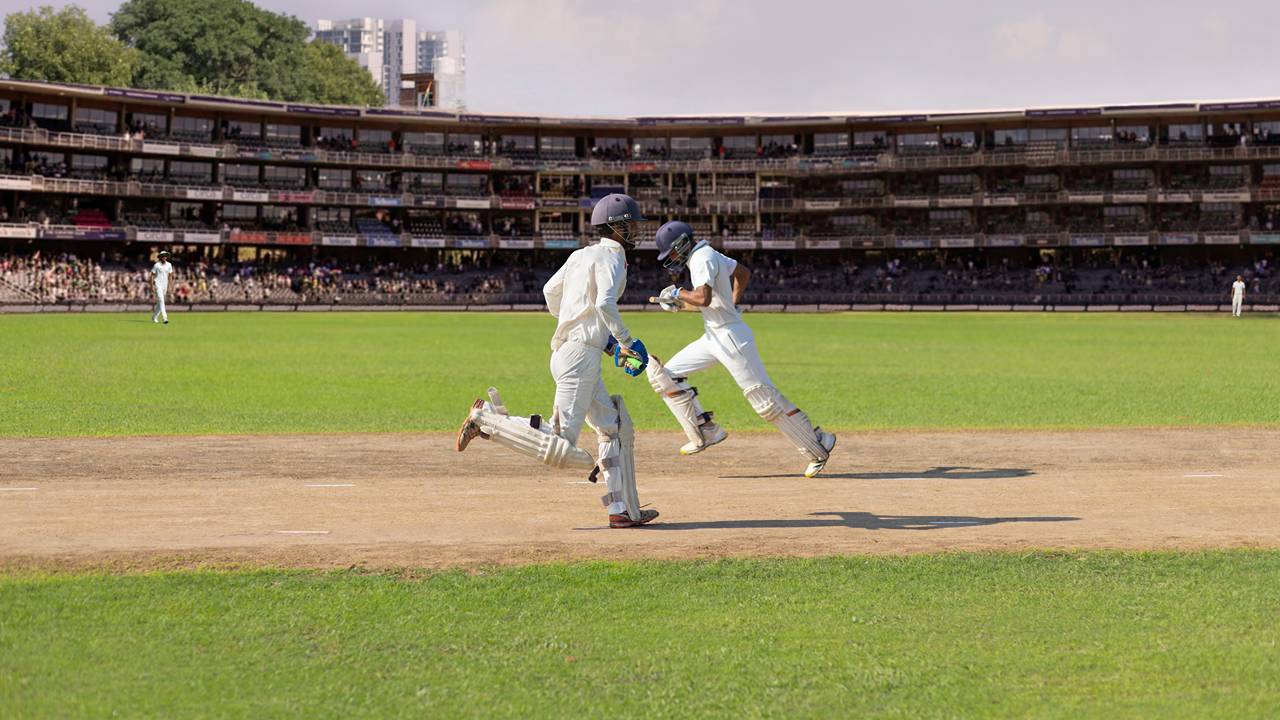Dr Boreham’s Crucible: Can this nuclear medicine play’s tech explode in the US?
An Australian invention, Cyclopharm’s lung imaging tool Technegas looks to have all the boxes ticked for success in the US.

Stockhead
Don't miss out on the headlines from Stockhead. Followed categories will be added to My News.
Just over a year ago, Cyclopharm won US Food and Drug Administration (FDA) approval for its lung imaging tool, Technegas.
Given the agency took 16 years to bestow its consent, the moment was a seminal one indeed for the company.
But as new drug or device market entrants quickly discover, the FDA seal of approval is but one step in the commercialisation process.
Gaining reimbursement, forging distribution channels and winning the hearts of crusty clinicians are just as important.
A year on, Cyclopharm has made headway on the requisite measures – notably by winning full US public reimbursement and forging a deal with the expansive veteran’s health network.
“We have now ticked all the boxes,” says Cyclopharm CEO James McBrayer.
This month the company reported US sales-to-date of $250,000 from Technegas – a solid but hardly dial-moving start.
From here-on-in, revenues should be more impressive.
The FDA’s tardiness in approving the nuclear medicine device is a tad puzzling, in that Technegas is approved in 65 countries – including neighboring Canada – and has been administered 4.9 million times.
About Cyclopharm
Technegas was invented in the 1980s by Australian University bio-medical engineer Prof Bill Burch, who partnered with industrialist Ian Tetley to form Tetley Medical.
Technegas was commercialised after being approved in Europe in 1988.
Cyclopharm was founded in 1991 and listed in January 2007, after raising $11 million at 30 cents apiece.
“People are a bit shocked about us,” McBrayer says. “We are a 30-year overnight success story.”
Technegas was approved in Australia in 1986 – despite the Chernobyl meltdown that gave anything "nuclear" a bad rap – and in Europe since the early 1990s.
A pharmacist and accomplished saxophonist, Mr McBrayer joined in June 2008, taking over from John Sharman who went on to head up Medical Developments and then Universal Biosensors.
Mr McBrayer headed the nuclear medicine mob Syncor Australia, as well as Lipa Pharmaceuticals.
Cyclopharm took the unusual approach of tackling the rest of the world before the US, winning early approval in geographies including Europe and Canada.
In June this year, the company won three-year reimbursement from the public US health insurers, which is just as important as FDA approval itself.
About Technegas
Technegas involves the patient breathing a superheated radioactive, gas-like substance, which sounds unhealthy but leads to better lung imaging.
The tool is currently used mainly to detected pulmonary embolisms – blood clots – but the FDA approval covers “visualisation of pulmonary ventilation”. This includes common conditions including chronic obstructive pulmonary diseases (COPD), asthma and – lest we forget – long Covid.
Manufactured at the bedside, Technegas consists of dry-carbon nano-particles irradiated with the isotope technetium-99 (which, as nuclear scientist readers will know, is produced from decaying molybdenum-99).
The particles are 150 nanometres and to put that in context a sheet of paper is about 100,000 nanometres thick. The gas-like substance is freshly brewed by heating a carbon crucible to 2700 degrees Celsius and inhaled by the patient via tubing. Only three to four breaths are required.
The gas works as an imaging agent, allowing three-dimensional viewing with a gamma or single photon emission computed tomography (CT) camera. The nanoparticles have a six-hour radioactive life, after which they are eventually dispersed through breathing.
Technegas images the fine alveoli, where the oxygen and blood mix.
“If you can’t breathe, nothing else matters and we show where oxygen needs to go to get into the body,” Mr McBrayer says.
But what’s the problem?
Cyclopharm competes with the dominant CT and older two-dimensional nuclear techniques (see below).
Currently, about 85 per cent of patients are imaged with computed tomography pulmonary angiography, or CTPA. Nuclear imaging is confined to patients unsuited to CTPA, such as those who are pregnant, have poor kidney function or are allergic to the imaging agents.
Nuclear medicine diagnosis is done with an isotope called xenon-133, which requires a negatively-pressured room and a method to trap gases expelled by the patient.
Then there’s another technetium-99 based liquid aerosol agent called DPTA, which is indicated for renal (kidney) imaging but has been deployed off-label for pulmonary embolisms. DPTA stands for diethylene-triamine-penta-acetate, seeing as you asked.
Cyclopharm claims Technegas surpasses CTPA and DPTA in terms of avoiding both false positives and false negatives.
Storming the vet market (no, not dogs and cats)
On October 8 the company announced a deal with the US Veterans Health Administration (VHA), which is expected to open the doors to other US Federal agencies.
The US veterans’ health market is a medical sector in itself – bigger than the entire Australian health system
“I was pleasantly surprised,” Mr McBrayer says of the timing of the contract. “I thought we had a few more weeks to go until they would tell us one way or the other.
“Clinically and operationally, we ticked all the boxes but when you get into the contracting phase of any government entity, it can be challenging.”
The interim agreement will enable the company to access 120 VHA hospitals (those with nuclear medical medicine departments).
The deal is also a springboard to accessing other federal agencies, notably the Department of Defence and National Institutes of Health hospitals.
One reason for the expeditious approval - it took about nine months - was the company convinced the authorities to take a national approach, obviating the need for the company to deal with more than 20 regional offices.
Mr McBrayer says company does not expect all 120 sites to be up and running at once, given the need to train clinicians and source argon (an input in the process).
Finances and performance
In August, the company reported overall six-month Technegas revenue of a flat $7.46 million, with the US investment resulting in a loss of $7.48 million compared with a $2.66 million deficit previously.
Total revenue of $13.3 million (down 19 per cent), reflected $4.81 million of revenue from distributing third-party radio-pharmaceutical capital equipment and consumables.
This month, the company reported US Technegas sales of $250,000 in the 11 months post FDA approval.
“We will have a good second half,” Mr McBrayer says. “We had to build inventory but now we have reimbursement we have gone up a gear.”
Earlier this year the company raised $24 million, $20 million in a placement and $4 million in a share purchase plan, both at $1.42 a share (a 14 per cent discount).
“I have been with the company for 16 years and I can count the number of capital raisings on one hand,” he says.
“We have been very frugal.”
Mr McBrayer says the company expects to be cash-flow positive and profitable (on an annualized run rate) by the end of 2025.
Bell Potter forecasts calendar 2025 earnings before interest tax and depreciation of $1.1 million and a $1.7 million net loss, on revenue of $46.5 million (up 66 per cent).
But 2026 is the year really tipped to deliver, with ebitda of $1.1 million and a net profit of $11.1 million.
Quirkily, Cyclopharm paid a 0.5 cents dividend in 2023 and isn’t expected to pay one this year or in 2025, but Bell Potter forecasts a one cent payout in 2026.
Over the past 12 months Cyclopharm shares have scanned between $1.35 (August 30 this year and $2.45 (October 12 last year). They peaked at $3.32 in January 2021 and bottomed at 12 cents in March 2013.
The size of the prize
The US accounts for half of the world’s nuclear medicine market.
In fact, the starred-and-striped nation always seems to account for 50 per cent of any drug, device or diagnostic sector (and about 99 per cent of the gun market).
Cyclopharm estimates a $US180 million US market for pulmonary embolism, with nuclear medicine accounting for 600,000 of the four million scans undertaken annually.
The company aims to double nuclear medicine’s 15 per cent share of the market to 30 per cent.
The company has a program called Beyond PE – as in pulmonary embolisms, not private equity or physical education – which seeks to expedite the company’s move into the aforementioned other lung diseases, notably COPD.
These indications would increase Cyclopharm’s addressable market to $US900 million.
Initially, the company is targeting about 2000 of the 8000 US nuclear medicine departments
. “Through buying groups and the larger institutions, we have already engaged 830 sites with proposals in front of them,” Mr McBrayer says.
At the end of August, six Technegas generators had been installed for US clients, with a further 11 contracts signed and 100 sites subject to contract or internal hospital committee review.
Management has guided to 300 installed generators by December 2025.
The company cites actual and potential installations of 832, taking into account secondary sites contractually linked to the initial installation.
Mr McBrayer estimates the company has won an average 85 per cent market share of nuclear medicine-based tests in other countries in which it operates.
Revenue model and reimbursement
In the US, Technegas is now subject to favorable "transitional pass-through" rules.
This means the device is fully reimbursed, stand-alone, rather than part of a package including the cost of the radio-pharmacy and the procedure.
“We now have both the public and private sectors covered,” Mr McBrayer says.
Clinicians are reimbursed at $US328 per test, whilst the company charges $US225 per test. This enables enough fat for the clinicians, the hospitals and the company to be happy.
Under the company’s revenue model, it maintains ownerships of the machines (the Technegas generators) and charges rent of $US7000 a year.
There’s also a one-off $US7000 for installation and training for new clients, who also buy a starter kit of 50 tests at $US225 per test ($US11,250).
Taking the consumables into account, management expects average revenue of US$70,000 per year from the bigger sites.
“Our is more expensive and rightly so because we are clinically better,” chimes Mr McBrayer.
Dr Boreham’s diagnosis:
Asked how much the company has expended to get to this juncture, Mr McBrayer quips: “in blood sweat and tears?”
On third-party estimates, Technegas has cost around US$80 million to develop.
Lest anyone get too carried away, the US Technegas rollout has been slower than expected. But this should change as the transitional pass-through concession will spur interest from hospitals who can see a decent buck in it for themselves.
Put another way, management will have no excuses if US sales fail to launch.
Despite its US focus, Cyclopharm has no intention of leaving Australia, where it makes the Technegas generators at its Kingsgrove, Sydney site.
“We are happy to be part of the Australian community,” Mr McBrayer says. “We are still an Australian invention that has been taken overseas.”
Cyclopharm at a glance
ASX code: CYC
Share price: $1.515
Shares on issue: 111,136,850
Market cap: $174 million
Chief executive officer: James McBrayer
Board: David Heaney (chair), Mr McBrayer, Kevin Barrow, Dianne Argus, Prof Gregory King, John Wigglesworth
Financials (half year to June 30, 2024): revenue $13.3 million (down 19%), sales revenue $12.27 million (down 17%), loss of $7.51 million ($2.9 million deficit previously), cash balance $27.6 million (up 52.5%)
Identifiable major shareholders: Anglo Australian Christian and Charitable Fund 12.2%, Regal Funds Management 11.31%, Australian Ethical 9.2%, Chemical Overseas Ltd 8.49%, CVC Ltd 6.14%, Mr McBrayer 5.64%
Disclosure: Dr Boreham is not a qualified medical practitioner and does not possess a doctorate of any sort. But he makes up for it in blood, sweat and tears.
This column first appeared in Biotech Daily
Originally published as Dr Boreham’s Crucible: Can this nuclear medicine play’s tech explode in the US?



